Understanding and Using Engagement Scoring
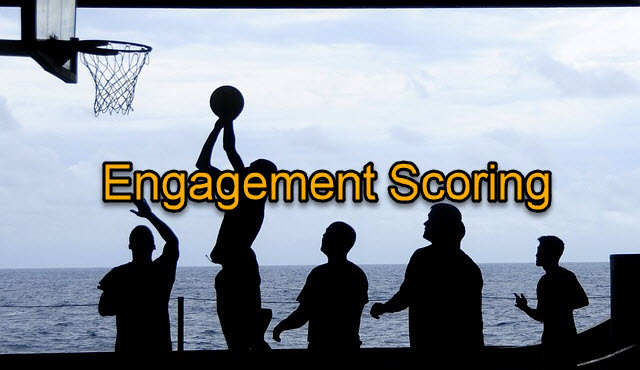
[vc_row][vc_column][vc_column_text]At ASAE Annual, there was a very informative session called “Finding Highly-Engaged Members Through Engagement Scoring.” It outlined goals and initiates to engage members. It also identified a scoring model designed to help organizations better quantify engagement. There is no denying that engagement scoring can significantly improve your member engagement initiatives. So the question becomes: what is stopping you from using it?[/vc_column_text][/vc_column][/vc_row][vc_row][vc_column][vc_empty_space height=”20px”][/vc_column][/vc_row][vc_row][vc_column][vc_column_text] Getting Back to Basics Engagement Scoring allows you to quantifiably measure how active (or engaged) a member (or non-member) is with your organization. You can describe engagement in the following ways: Opening an email sent from your organization Clicking through an email sent from your organization Tagging your organization in a social media post Registering for one of your educational offerings Attending one of your events Purchasing a book published by your organization Volunteering to assist with an event And many more! [/vc_column_text][vc_empty_space height=”20px”][/vc_column][/vc_row][vc_row][vc_column][vc_column_text]It is up to your organization to define what engagement with your organization entails. Once you outline the various methods of engagement, you then assign a number (or score) that weighs the strength of that interaction. Your scoring should not only include numbers that increase as your member expands his/her interactions but should also allow for subtracting from that score as well. For example, if a member withdraws from a committee or cancels her registration from a meeting, she should have points subtracted from her score to show her decrease in engagement.[/vc_column_text][vc_empty_space height=”20px”][/vc_column][/vc_row][vc_row][vc_column][vc_column_text] Applying the Score Engagement Scoring can help your organization identify the most – least engaged individuals in your organization. By examining those numbers, you can establish a rating system that helps your leadership plan on where and how to focus your retention and recruiting efforts. For example, you can focus on weaker subsets of your membership and decide to initiate a project to poll them and do a deep dive into why they are not more engaged.[/vc_column_text][vc_empty_space height=”20px”][/vc_column][/vc_row][vc_row][vc_column][vc_column_text] Accurate Scoring Requires Up-to-Date Technology Today, most Association Management Software (AMS) systems have the capability of implementing engagement scoring in your organization. (Altai Systems was a forerunner of this initiative!) That said, given how your members interact with your association, your AMS may not be able to extract the engagement data you hope to measure. Legacy systems are frequently slow to update and cripple organizations with complicated upgrades and outdated integrations. For example, you may want to score members who Tweet hashtags related to your event and tag your organization in the Tweet. If you are on an outdated AMS, that engagement may not be able to be measured. This will leave you with incomplete data. You also will not know whether or not your social media initiatives are resonating with your members.[/vc_column_text][vc_empty_space height=”20px”][/vc_column][/vc_row][vc_row][vc_column][vc_column_text] Cloud Based Applications to the Rescue There is a way to ensure your AMS will always be ready to further your engagement goals. The key is to have your AMS on a Cloud based CRM like Microsoft Dynamics. (Shameless plug: Altai Systems is built within Dynamics). Cloud based association management enables you to always be connected to the latest and greatest methods of technological engagement. Your team will have the creative freedom to explore a variety of membership initiatives without worrying that they won’t have the ability to implement their ideas. Having the right technology is crucial in securing success for your engagement scoring goals. .[/vc_column_text][vc_column_text]Contact sales@altaisytems.com to learn more about how Altai has successfully implemented Engagement Scoring for our clients and can do the same for you.[/vc_column_text][/vc_column][/vc_row]
Increasing Your Members’ Engagement Journey
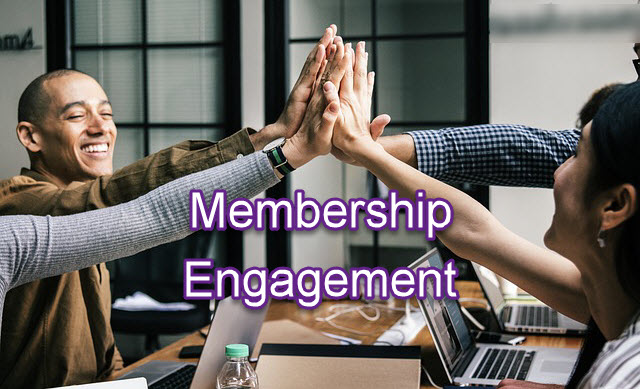
[vc_row][vc_column][vc_column_text]Increasing Membership engagement is at the forefront of every association’s strategic plan. The only way to increase your members’ engagement is to increase valuable communication. It needs to go from member to member, from member to organization, and from the organization to its membership. It is your job as a thought leader to put the best practices of your organization into the hands of your members. To do that, you need to re-think how you interact with your members. You need to do more than push out information. You need to also utilize the available tools to listen to what they are saying and how they are saying it.[/vc_column_text][vc_empty_space height=”20px”][/vc_column][/vc_row][vc_row][vc_column][vc_column_text] Don’t Just Talk, Listen One of the top methods of encouraging members to collaborate is through the use of a community platform. Community platforms are interactive and allow members to talk to one another. While they are collaborating, you can listen to those conversations. You can learn from those conversations and use what was learned to boost member support, deliver a better member experience and create your own organizational “Book of Knowledge” for best practices. [/vc_column_text][vc_empty_space height=”20px”][/vc_column][/vc_row][vc_row][vc_column][vc_column_text] Personalized Interactions Even with a community platform, a large challenge for member-based organizations is the ability to drive personalized and consistent messaging. You want to find new ways to understand your members, acquire more members, and increase retention, therefore understanding your organization’s demographics and how data is consumed are important factors to consider. Generationally speaking, the youngest generation, Generation Z, has little patience for technology slowdowns and glitches. They have extremely high expectations of technology – it better be easy, and it better work. This is where social media monitoring tools can be extremely useful. These tools can track conversations, sentiment, events, etc. quicker across multiple social media channels. You can see all the information you are looking for succinctly and easily. You also have the ability to respond immediately if issues arise. With social media monitoring, you can be more responsive to your members in the virtual platforms they use daily and increase your interactions with them more than ever before. Providing members with a tailored experience through personalized interactions and engagement is one of the hallmarks of increasing engagement through Digital Transformation. It uses data and insights to trigger the right conversations at the right time to drive consistent and personalized messaging. This helps organizations understand their current members, find or identify new members and retain existing relationships.[/vc_column_text][vc_empty_space height=”20px”][/vc_column][/vc_row][vc_row][vc_column][vc_column_text] Anticipate Your Members’ Needs Tools such as Microsoft’s new Artificial Intelligence (AI) for Dynamics 365/CRM, will help you be proactive and determine what your member needs before they even know they need it. Through AI, virtual agents analyze conversations and make recommendations to staff based on the data learned, thereby providing them with informed guidance that helps you anticipate your members’ needs. You, the association, can know your member better than you ever have in the past and provide direct and specific meaningful content thus driving better engagement. Engagement strength is measured in member acquisitions and loyalty using a smart platform that enables personalized experiences. [/vc_column_text][vc_empty_space height=”20px”][/vc_column][/vc_row][vc_row][vc_column][vc_column_text] Benefits of Member Engagement The most significant benefit of engaging your current members is a higher rate of renewal. You can measure engagement strength by using a smart platform that enables personalized experiences. Use data insights to personalize your member’s interactions. You will receive a 360-degree view of your members, their relationships, and their interactions by providing a single view of a member’s activity. Use intelligent, modern Cloud applications to increase your members’ loyalty and acquire new members. Attract new members with a redesigned experience using state-of-the-art social media marketing to engage members within their personal networks. Retain your members with an innovative service experience and gain that holistic view. [/vc_column_text][vc_empty_space height=”20px”][/vc_column][/vc_row][vc_row][vc_column][vc_column_text] Summary If you are interested in learning how Altai can help you better engage with your members, contact us at sales@altaisystems.com.[/vc_column_text][/vc_column][/vc_row]
Don’t Outsource – Innovate
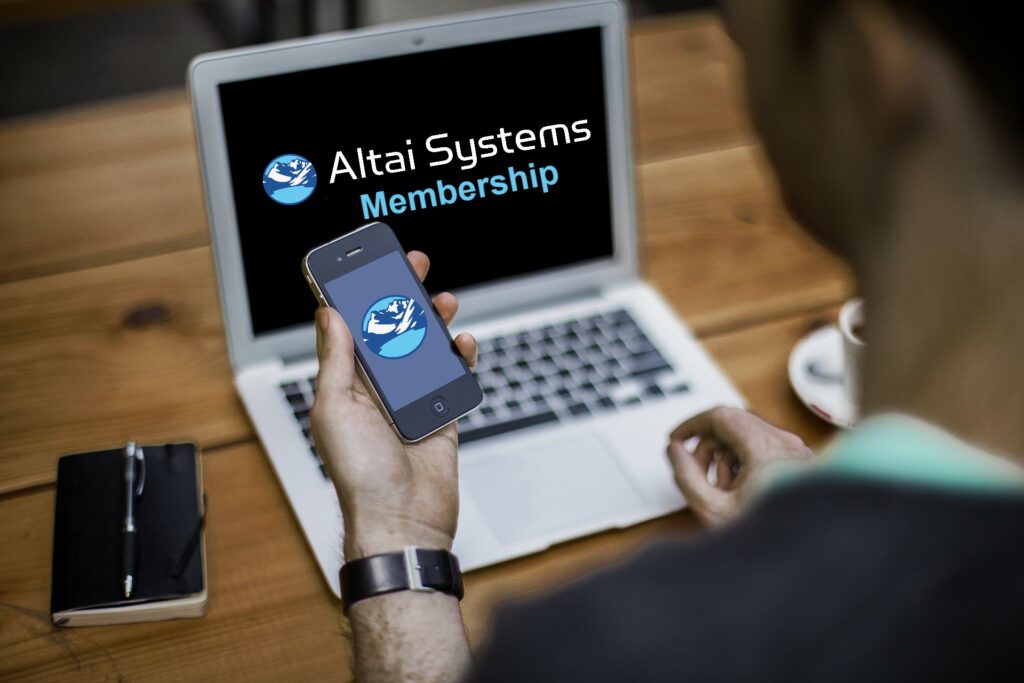
[vc_row][vc_column][vc_column_text]On a recent ASAE Collaborate thread, an association leader for a small organization broached the subject of outsourcing a variety of functions. “Alice” said they currently outsource accounting and payroll. So, she requested assistance finding outsource outlets for the following: Front Line Membership (resetting passwords, purchasing membership) Membership Renewals (reminders, mailing, telephone calls) Meeting Help (exhibit hall and onsite registration) Publications (publication of program and magazine) While finding time to strategize is difficult, Alice conceded that they do need to start thinking conceptually about what would yield the biggest return for their small staff. We have some ideas where Alice can start.[/vc_column_text][vc_empty_space height=”30px”][/vc_column][/vc_row][vc_row][vc_column][vc_column_text] Stop and Take a Beat When you are in the thick of running an association, it is very difficult to stop and examine your processes. You have deadlines, finances, courses, and meetings that all need to be addressed. Instead, you keep moving forward to get it all done. As hard as it is to do… STOP! As the old adage says, “Work smarter, not harder.” At the very least, take aside a morning and sit down with your team to examine their daily tasks. Then take into consideration: What do you need to do to keep the association running? How can you better serve your members? [/vc_column_text][vc_empty_space height=”30px”][/vc_column][/vc_row][vc_row][vc_column][vc_column_text] Work Smarter Your members, particularly if they are considered Millennials or Generation Z, are extremely tech savvy. They want things easy and done immediately. What they don’t want is to fill out a paper membership renewal or meeting registration. They want to be able to do that from their mobile device. It is easy to look at the tasks you assessed and think that the best thing to do is outsource them all. We agree that may be true for functions like tax preparation, payroll, and benefits. But for others like membership renewal or meeting registrations, look to technology for help. Simply adopting an adaptable integrative association management platform could solve most (if not all) of your problems. By doing this, association leaders will have more control over their data and be able to save money in lower overhead costs.[/vc_column_text][vc_empty_space height=”30px”][/vc_column][/vc_row][vc_row][vc_column][vc_column_text] Adopt Innovative Technology Solutions Here is how Alice can technologically innovate and keep her processes in-house: Front Line Membership Help (Resetting Passwords, Purchasing Membership) Adopt a robust cloud-based CRM (like Microsoft Dynamics) to automate membership purchasing. Once a member applicant completes the on-line form, the data captured can automatically populate several other systems including: Accounting/Billing – It can be connected to an accounting system like QuickBooks for automated account information and payment tracking. Membership – You automatically have data populated with the information you need to understand your member (i.e. location, credentials, engagement points, etc.). Marketing – You can have the system send automated “new member” emails with introductory information like finding upcoming events or publications. Password Assistance – You can bypass this with single user sign on or automate it with self-directed password assistance. [/vc_column_text][vc_empty_space height=”20px”][vc_column_text] Membership Renewals (Reminders, Mailing, Telephone calls) Membership can be set up to automatically renew on the member’s credit card saving you countless account receivable hours. Members can get reminders, via automated emails and text messages, that their membership was automatically renewed or that they need to actively renew. If you need to send a letter as a last resort, an automated message and mail merge document can also be sent to a mail house or employee to send the letter. [/vc_column_text][vc_empty_space height=”20px”][vc_column_text] Meeting Help (Exhibit Hall and Onsite Registration) Microsoft Teams can help teams talk directly to each other either in the planning process or on-site via a free app. Teams can also assign and check off tasks as they are completed so there is no overlap in or misunderstanding of duties. An AMS (like Altai) that is built within Microsoft Dynamics can help ensure that all the data you need to capture for the event reaches all the involved parties. [/vc_column_text][vc_empty_space height=”20px”][vc_column_text] Publications (Publication of Program and Magazine) Use Microsoft tools like Publisher to layout your content, save it, and then convert it to a PDF. You can then upload it to your website to get a shareable link and enable members to download the content. You can then use the link to send via email and track the amount of opens, downloads, and/or purchases of the content. If you have a complicated process that involves printing and then mailing your publication, check out how Microsoft Flow saved us (and our client) hundreds of hours and dollars digitizing that process. [/vc_column_text][vc_empty_space height=”30px”][/vc_column][/vc_row][vc_row][vc_column][vc_column_text] Conclusion As an association management software (AMS) company, we know you probably think, “Of course Altai would recommend this tactic.” But don’t just take our word for it. On the original thread referenced at the beginning of this article, an unaffiliated Nonprofit Management Advisor recommended, “Take another look at your technology infrastructure to see if you improve it, that could create more efficiency and free up staff time.” We couldn’t agree more. For more information on how we can help your organization be more efficient and free up your staff’s time, contact us at sales@altaisystems.com.[/vc_column_text][/vc_column][/vc_row]
Maximizing the Use of Planning Apps for Your Association

[vc_row][vc_column][vc_column_text]One of the universal activities common to all associations is planning meetings, big and small. Using effective planning apps are paramount in keeping your team informed, connected, and collaborating. Many organizations use Google Calendar, Trello, or Jira to manage their planning activities. While those apps are good, if you are an Office or Dynamics 365 user (or are about to be), you may want to instead consider using Microsoft Planner and StaffHub in conjunction with the Teams app.[/vc_column_text][vc_empty_space height=”20px”][/vc_column][/vc_row][vc_row][vc_column][vc_column_text] Teams and Planning in Action Last month we explored the main features and functions of the Microsoft Teams app in our blog article, “Microsoft Teams: Designed to Improve Your Association’s Collaboration.” In that article we focused our thesis around the ways Teams can be used to facilitate better team collaboration. Now we want to tell you more about how you can use Planner and StaffHub with Teams to help maximize your planning activities.[/vc_column_text][vc_empty_space height=”20px”][vc_column_text] Planner Microsoft Planner is a project task management system. Planner makes it easy for your staff to create new plans, organize and assign tasks, share files, chat about what you’re working on, and get updates on progress. Planner can be used to manage an educational event, brainstorm new member engagement ideas, track completion of annual meeting components, prepare for an advocacy day, or just generally organize your team members more effectively. It is connected to your Outlook, so you will receive notifications and reminders of upcoming tasks that you set for yourself. It also allows you to assign individual tasks or assignments with due date expectations to any of your organization’s other Office or Dynamics 365 users. If someone else assigns you a task, you will receive a notification that a task has been assigned to you. Then you will also start receiving the reminder notifications in Outlook. When implemented within Microsoft Teams, this becomes an invaluable way of assigning, tracking and completing tasks for your team. Likewise, when used in a Dynamics based association management environment (like Altai’s), you will also be able to have all your planning activities link directly back to your AMS. Because this is already a part of Office 365, this is super easy to use and considerably less expensive than a separate time and materials management system. .[/vc_column_text][vc_empty_space height=”20px”][vc_column_text] StaffHub Microsoft StaffHub is currently an app that helps you create and manage work shifts, share files, and communicate important information with team members. Effective October 1, 2019, StaffHub will be retired and all its capabilities will be rolled into Teams. Today, Teams includes the Shifts app for schedule management. Starting in October StaffHub’s additional capabilities will roll out over time. Both today and in the future, this tool can be particularly useful for organizations that have annual meetings, advocacy days, or multiple events that require a coordination of staff and volunteers. Team members can have access to all their shift information, including the ability to easily swap shifts with others, from a mobile app. Using the app can ease the on-site coordination of events. It can also lower the probability of miscommunication within the team. When used in a Dynamics 365 environment, StaffHub can also help with committee management by seamlessly tracking and logging your committee’s activities within your AMS. [/vc_column_text][vc_empty_space height=”20px”][vc_column_text] Summary With so many familiar tools already available to you through Office 365, the need to add outside planning apps is practically obsolete. If you would like to see the overview of Planner and StaffHub specifically, please complete the form below to receive a link to view our joint webinar with ReviewMyAMS entitled Top 5 Microsoft 365 Apps You Can Use Today. You can also always reach us at sales@altaisystems.com with any questions about this article and how it can be used to enhance your association management.[/vc_column_text][vc_empty_space height=”20px”][/vc_column][/vc_row][vc_row][vc_column width=”2/3″][vc_cta h2=”View our Top 5 Microsoft Apps You Can Use Today Webinar” h4=”Simply complete the form below and a link to the recording will be emailed to you.” style=”3d” color=”blue”][/vc_cta][/vc_column][vc_column width=”1/3″][/vc_column][/vc_row]
Microsoft Teams: Designed to Improve Your Association’s Collaboration
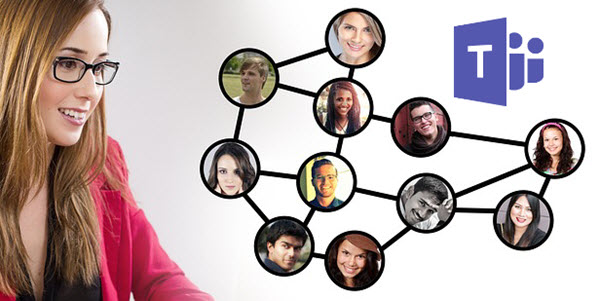
[vc_row][vc_column][vc_column_text]If you currently use Skype for Business or Office 365, you have probably heard that Microsoft is planning to replace Skype. The heir apparent to that program is Teams. As both a Microsoft partner and a user of the program, we can tell you that there is nothing to fear and so much to gain in making the switch to Teams. Read below to see why we recommend teams. It really does score a home run![/vc_column_text][vc_empty_space height=”20px”][/vc_column][/vc_row][vc_row][vc_column][vc_column_text] About Microsoft Teams Skype currently offers screen sharing and quick chatting (instant messaging), among other capabilities. Those same capabilities are also available in Teams as is so much more. Because every team is unique, Teams is designed to allow people to communicate and collaborate with purpose-built, integrated applications. Teams allows for multiple channels to be created and conversations to flow from top to bottom while notifying users of updates. If users need a face-to-face conversation, with a single click they can easily start a video chat with other channel team members. [/vc_column_text][vc_empty_space height=”20px”][/vc_column][/vc_row][vc_row][vc_column][vc_column_text] Office and Dynamics 365 Integrations Unlike other chat platforms like Atlassian’s HipChat and the popular Slack, Teams is fully integrated with Microsoft’s full suite of 365 applications. Your favorite apps such as Word, Excel, PowerPoint, Planner, and Power BI are all able to be accessed from Teams. Therefore, any spreadsheets, documents, etc. that are being shared with the Team are synced with a copy stored in cloud storage on OneDrive and within SharePoint. This allows for team members to always be using the most current version of the content. It also has collaborative editing features that allows multiple team members to be inside the content at the same time making edits in real time together. [/vc_column_text][vc_empty_space height=”20px”][vc_column_text][/vc_column_text][/vc_column][/vc_row][vc_row][vc_column][vc_column_text]When you create a team, you get a corresponding Office 365 group, which includes a group inbox and calendar in Outlook. Although you can’t post messages or view channel conversations from Outlook, the Outlook group provides an email address people from outside the team can use to send email to the entire Team. [/vc_column_text][vc_empty_space height=”20px”][vc_column_text]Our customers, Member based organizations, are most excited about this feature: As of the April 2019 release, Microsoft is including the Dynamics 365 Customer Engagement app for Microsoft Teams. Now, users of teams can access their Dynamics 365 application right from within Teams. This will now enable you to collaborate on and view your association management data like who your most/least engaged members are without ever leaving Teams! Collaboration between people in the membership or event teams can work directly with the education team to collaborate on mutual initiatives at the same time. This collaboration can be a game changer for departments like the events’ team. Microsoft Teams combined with Dynamics 365|Altai AMS provides your organization with an Association Business Platform allowing staff to collaborate on membership, engagement, events, logistics, registrations, sponsorship, speakers, etc. all in one place. [/vc_column_text][vc_empty_space height=”20px”][vc_column_text][/vc_column_text][vc_empty_space height=”20px”][vc_column_text] Cool Features But wait, there’s more! Teams boasts some incredibly useful functions and features that can take your Association’s collaborations to an even higher level. Here are the top two: Automatic Transcription of Meeting Minutes – This is a game changer for times when you need to have committee or board meetings quickly and accurately transcribed. Users can have recordings of their Team meetings automatically transcribe the conversation so that users can play back meeting recordings with closed captions and search for important discussion items in the transcript. AI Bot capabilities – Bots are a way for users to “set it and forget it.” The key problem bots solve is time management and the following are designed to do just that without ever leaving Teams: Calendar BOT – Allows you to compare calendars and schedule meetings quickly and easily. Who – Allows you to search for someone within your organization by being able to ask a simple question. (Best for large Associations) Polly – Allows you to easily conduct and analyze surveys and polls. [/vc_column_text][vc_empty_space height=”20px”][/vc_column][/vc_row][vc_row][vc_column][vc_column_text] Coming Soon Live Captions and Subtitles: For attendees of Teams’ meetings who are hearing impaired, have different levels of language proficiency or are connecting from a loud location, live captions and subtitles will be available for meetings. This feature will make your Teams meetings more inclusive and improve meeting effectiveness by allowing attendees to read speaker captions in real-time, so they can more easily stay in sync and contribute to the discussion. Secure Private Channels: Later this year you will be able to customize which team members can see conversations and files associated with a channel. Instead of creating a separate team, you will be able to restrict participation and exposure in a channel to limit visibility. This feature, as well as Information Barriers, will be particularly helpful for associations who have committee or board members administering varying roles in the association. Information Barriers: Allows you to limit which individuals can communicate and collaborate with each other in Microsoft Teams. Data Loss Prevention (DLP): Allows your IT admin to prevent sensitive information from inadvertently being shared inside or outside the organization. Admins will be able to detect, automatically protect, and screen for sensitive information in chats and channel conversations. Live Events in Microsoft 365: Available now, this feature allows users to create live and on-demand events for employees, members, boards, committees, and other constituents. Live events use video and interactive discussions across Teams, Stream, or Yammer. Users can have up to 10,000 attendees participate in real-time from anywhere on any device. If people want to review the event, they can use artificial intelligence (AI) features such as automatic transcription to consume the content of the event recording. [/vc_column_text][vc_empty_space height=”20px”][/vc_column][/vc_row][vc_row][vc_column][vc_column_text] Teams Beyond Microsoft Teams collaborative capacities extend beyond Microsoft specific apps. At its inception, Teams started with over 70 Connectors and 85 Bots that allows it to communicate with non-Microsoft apps. Connectors can currently push updates from Trello, GitHub, MailChimp, and more to Teams’ channels. That number continues to grow as the platform grows. [/vc_column_text][vc_empty_space height=”20px”][/vc_column][/vc_row][vc_row][vc_column][vc_column_text]Microsoft Teams adoptions and features are growing at a rapid rate. There was a recent Spiceworks survey that examined the adoption and perceptions of collaborative chat applications. “The results show that while Skype for Business continues to hold the number one spot with 44 percent of businesses
Microsoft or Salesforce: What is the Best Platform for Your Association?
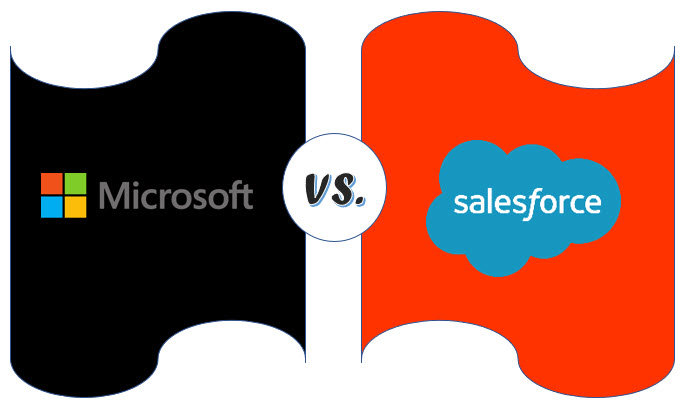
[vc_row][vc_column][vc_column_text]Within the Association landscape there are multiple AMS (association management software) solutions. That scope narrows significantly when looking at progressive software models that promote the idea of digital transformation. The two most robust and popular Business Platforms used by associations then comes down to Microsoft Dynamics and Salesforce, but which one is the best?[/vc_column_text][/vc_column][/vc_row][vc_row][vc_column][vc_empty_space][vc_column_text] Growth Comparison Statistics Since 2014, Microsoft has focused on its SaaS business, and business is great. They have grown from a $380B (market cap) to a greater than $800B company in just four years. Most of that growth is attributable to their Business Platform. Some of the more popular components of the platform include: Microsoft Azure Business Cloud – growing at a staggering 75% growth rate Artificial Intelligence (AI) – Microsoft AI and Research has 8,000+ employees working every day to make easy AI available to everyone. (No other company is doing more to make AI easier than Microsoft. No other company is investing more in AI than Microsoft.) Microsoft BOT Service – provides an integrated environment that enables you to build, connect, test, deploy, and manage intelligent bots – all from one place. This initiative alone has over 300,000 developers working with it to continually improve your experience. Microsoft makes many acquisitions each year, and over ¾ of them directly benefit the Dynamics business platform.[/vc_column_text][vc_empty_space height=”20px”][vc_column_text][supsystic-tables id=1][/vc_column_text][vc_empty_space height=”20px”][vc_column_text]Like Microsoft, Salesforce has also grown and is doing a fantastic job. It’s gone from a $60B (market cap) to a $155B company in just 4 years. They, too, have also acquired a few companies. Some of Salesforce’s notable acquisitions include: Heroku – In 2010 they added this platform as a service (PaaS) that enables developers to build, run, and operate applications entirely in the cloud. MuleSoft – In 2018, they added the most widely used integration platform for connecting SaaS & enterprise applications in the cloud and on-premise. Datorama – In 2018, Datorama joined the Salesforce community by bringing AI enhanced marketing to compete with the Azure based Adobe Marketing Cloud. Platform Summary: Microsoft’s platform is the fastest growing, has the greatest number of business apps and connectors, and is the largest platform available to organizations. Microsoft is accelerating debt free at a tremendous rate making it very difficult for other platforms to keep pace. Due to its rapid growth – platform connections, integrations, and offerings are always being updated and added. It is also the most affordable, has frequent price drops, and performance increases.[/vc_column_text][/vc_column][/vc_row][vc_row][vc_column][vc_empty_space][vc_column_text] Pricing Models Both Salesforce and Microsoft offer varying SaaS pricing models. While it is difficult to compare them exactly the same way, Microsoft is typically 2/3 the overall cost of ownership when looking at equivalent features. The key is to look deeper into initial set up costs, licensing, transactions costs, API costs, feature costs and ROI over the long term. Unlike Salesforce, “Upsell” and “Go Live” cost increases are not part of Microsoft’s plan. Microsoft is generous with licensing and does not halt you like others do if you dip into an unlicensed feature. Reflected in Dynamics’ price is its robust out of the box functionality and inherit Microsoft integration. When associations are quoted implementation costs of a Dynamics based platform, the costs may initially come in higher than Salesforce. The key is to look deeper at the long-term costs. The cost to add apps is significantly reduced with a Dynamics implementation because so many apps are already included. Salesforce does not have the same number of included apps with its application. While the extensibility of the platform is comparable to Microsoft’s, the cost of implementing the extended functionality will most likely be much higher. Salesforce offers basic services out of the box, and they have a sizable AppExchange that allows users to easily extend their platform. The apps there are all designed to integrate with the Salesforce platform. What you may not know is that the AppExchange typically adds 25% to the cost of the app. Also, you cannot bypass Salesforce’s AppExchange to purchase your necessary apps from another venue. Microsoft has 3 “App Stores” (CRM, Azure, Office) with some overlap and thousands of apps. Unlike Salesforce, there are many hundreds of other app stores that allow you to add apps without paying that commission. In fact, many of the apps in Microsoft’s app stores are free and open source. To help give you a better understanding of the platforms’ price differences, we have developed the following comparison chart:[/vc_column_text][vc_empty_space height=”20px”][vc_column_text][supsystic-tables id=2][/vc_column_text][/vc_column][/vc_row][vc_row][vc_column][vc_empty_space height=”20px”][vc_column_text]When viewing a demo in either platform you need to be sure the demo you see is the product you will ultimately get. For example, if the demo is showing you the Lighting Enterprise license but your users are getting a Force.com license that is like test driving a Mercedes S Class and then learning the car you bought was a Toyota Celica. Shameless plug: Altai demos using the team license, and when demoing to the sales team at your organization, we demo using the Customer engagement. Platform Cost Summary: Microsoft is considered by experts to be approximately 2/3 the overall cost of ownership versus Salesforce. That said it is recommended you do your research when considering licensing for each product. Beware of licenses that will need to be upgraded on “Go Live” day. When that day comes, it will be too late to shop and negotiate pricing.[/vc_column_text][/vc_column][/vc_row][vc_row][vc_column][vc_empty_space][/vc_column][/vc_row][vc_row][vc_column][vc_column_text] Microsoft vs. Salesforce by the Numbers Both Microsoft Dynamics and Salesforce provide equivalent sales, service, and marketing functionality. Both provide customization data entry form design, easy reporting, social monitoring, app stores, dash-boarding, etc. Companies like Altai have added your necessary features such as membership, events, certification, donation and member commerce to Microsoft Dynamics. To understand what each company is doing in terms of investments, hiring, and giving, review the chart below:[/vc_column_text][/vc_column][/vc_row][vc_row][vc_column][vc_column_text][supsystic-tables id=3][/vc_column_text][vc_empty_space height=”20px”][/vc_column][/vc_row][vc_row][vc_column][vc_column_text]Platform Summary: While Salesforce has grown significantly over the last five years, they can’t touch Microsoft in terms of resources. The financial and technical investments Microsoft makes in their own products and
Altai Announces New Partner

[vc_row][vc_column][vc_column_text]We are expanding our leadership team as a part of Altai’s continued growth and commitment to innovation. Therefore, we are excited to announce that as of January 1, 2019, Altai’s newest partner is Grant Costello! Journey to Partner Grant started as a Consultant with Altai in 2010. As time progressed, Grant wrote more and more code and was tapped for his ideas on multiple projects. Last Spring, Altai’s current partners, Mike Frye and Jon Martin, approached Grant with an offer of a minority share in Altai Systems. Grant accepted, and the agreement was finalized last month, Goals for Altai’s Development Grant’s role is to lead the development team and oversee Altai’s custom features. In addition, he will lead the development of new features and oversee product architecture. When asked about his future goals at Altai, Grant replied, “I’m excited to be able to help shape the Altai product. I want to bring new features that make people’s jobs easier and automate maintenance and configuration so their time can be better spent with their members.” Personal Profile Grant is a Baltimore, Maryland native who attended the University of Maryland – Baltimore County (UMBC) majoring in Information Systems. While still in school, he worked full-time for another software company prior to starting at Altai. In addition to his interest in software development, he is also interested in the collection and storage of solar energy. He is a hobbyist who collects old laptop batteries with the goal of someday building his own power back system. Recently married, Grant resides in Baltimore with his new bride and 30 pound adopted rescue dog, Dixie. Congratulations, Grant! We can’t wait to see your plans in action.[/vc_column_text][/vc_column][/vc_row][vc_row][vc_column][vc_row_inner][vc_column_inner][vc_empty_space height=”20px”][/vc_column_inner][/vc_row_inner][vc_cta h2=”Experience Altai’s Unlimited Capabilities” txt_align=”center” style=”3d” color=”blue”]If you are interested in learning about Altai’s features, then sign up today for our next webinar: The Power of the Altai Systems Platform Built within Microsoft Dynamics.[/vc_cta][/vc_column][/vc_row]


